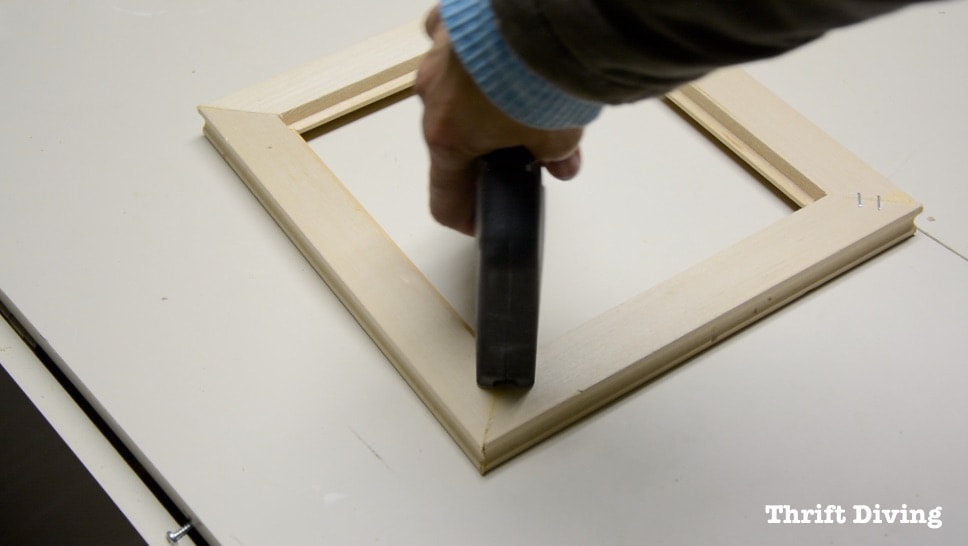How To Build A Bookcase Without Power Tools
.Recently I decided to get rid of my books, moving most of my collection into banker's boxes and stacking them in the office closet and the garage. Eventually I will move those along to a library that'll take them, or give them away as door prizes, or maybe send some to be scanned, digitized, and pulped.

(See also: )But I haven't been able to part with all of them. There's still the 'Read Next' shelf, the 'Try to Finish It One Day' shelf (some dense Delillos and Pynchons live there), and several 'All Time Favorite' shelves holding books that I often leaf through and still enjoy. Plus a couple of shelves of reference books and how-tos. Oh, and some cookbooks.So I still have plenty of books, and that means I need a way to display and store them. And attractively. An Old LadderThis looks daunting, but doesn't require too many DIY skills., attach your old wooden ladder, and then arrange your books.2. Ladders and BoardsI saw a lot of these during my search for interesting bookshelves, and frankly I'm underwhelmed.
It's a clever use of materials: a ladder (or two ladders side-by-side),. But it takes up so much room and looks messy and cluttered.This version, however, is a big improvement. It's a ladder, with the shelves once again resting on the rungs. Simple and elegant, and cheap depending on how you source the materials 3. A BookMount some 'L' brackets to the wall (dress it up by mounting an attractive board to the wall first, then mount the brackets to that),.
Stack your books or knick-knacks on your 'book' shelf. SkateboardsYou could store, your old Tony Hawk game cartridges, or a first aid kit.5. Stacked TablesCut an old coffee table in half, ('L' brackets, again, or a French cleat), and then pile on the books. Or go another couple of shelves higher with a smaller table cut in half. Boards and BricksA classic, like blue jeans, and the. Support the shelves with bricks (new or used), cinder blocks, blocks of wood, or even other books.
These can be as rustic or as elegant as you like, depending on the raw materials. Once I tried to impress a girl with my handyman skills by creating a set of these for her apartment. They supported her books well enough, and that's as far as that went.
Bottles and BoardsThis is a twist on the boards and bricks theme. A little more handiwork is required — measuring and drilling, instead of just stacking and stacking. Ropes and BoardsMost bookshelves rest confidently on the floor.
How To Build A Bookcase Without Power Tools 2
I'd worry about knocking into them and dumping my books onto the floor, but maybe with some tension in the ropes (by attaching to the floor or brackets mounted in the wall, as with the example here), one could keep the jostling to a minimum. Leather Belts and BoardsAnother in the dangling book genre, to suspend the shelves. These seem more decorative than practical (wouldn't it be a pain to reach around those straps for your tomes?). Board and BracketsYou've seen those ' that lean against a wall? This is like those, but.
That second link is to a high design (and probably high dollar) example, but one could easily DIY this. Boxes and Binder ClipsStacks of plywood wooden boxes, in various, complementary sizes,.
This design has a lot going for it: it's cheap; it's relatively easy to DIY; it's elegant. Make it even more awesome by cutting handholds in two of the sides; then you could use your boxes to carry your books around, too. Milk CratesIt was that gave me the idea to cut handholds in the plywood boxes above.
(See also: )13. Wooden BoxesInstead of stacking your plywood boxes,. You can use the binder clips to help hold them together, or arrange them however you'd like. An elegant — and secure — way to mount stuff on the wall is to use. You can make your own out of scrap plywood, or you can buy them ready made at the hardware store (or at ).
Don't forget to cut handholds. Old Dresser Drawersyou find at thrift stores, or yard sales, or on the sidewalk, into boxes you can mount on your wall. These are another candidate for a French cleat. Custom Cut Cardboard BoxesYou can buy these modular, (20 Euros for a box of three, I think; I don't read French), or you could borrow the design and use it on your own cardboard. If you were really handy with computer assisted design tools, you could design a version of this in thin plywood, and have the parts fabbed at an Internet CNC service,. (See also: ) 16.

Black Iron PipeJust the pipe, with the books resting on the pipe and leaning against your wall, or go all out. Hungarian ShelvesIf you have lots of books to store, or you want to try a basic, DIY modular system, are the answer. Attach notched 1x2s or 2x4s to wall studs, then attach notched shelves to those.
How To Build A Simple Bookcase Without Power Tools
I'm considering a variation of this design for a DIY wall unit in my home office. Cleat and SticksAnd why haven't I made the Hungarian Shelf wall unit in my home office?

Because I am enthralled by this from Design Within Reach. They share the same basic design as the Hungarian Shelves — interlocking notched shelves and supports — but instead of attaching to wall studs, the support rails hang from a single, elegant cleat.
At $2,000 and up, these shelves are definitely out of my reach, but they are certainly DIY-able, assuming a few expensive power tools. Someday.What are your favorite low-cost, high design bookshelf ideas? Like this article?